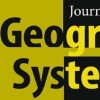


The Journal of Geographical Systems is an interdisciplinary peer-reviewed academic journal that aims to encourage and promote high-quality scholarship on new theoretical or empirical results of interest to social and GIS scientists. Coverage includes regional science, economic geography, spatial economics, regional and urban economics, GIScience and GeoComputation, big data, and machine learning.
This profile is from a federated server and may be incomplete. Browse more on the original instance.